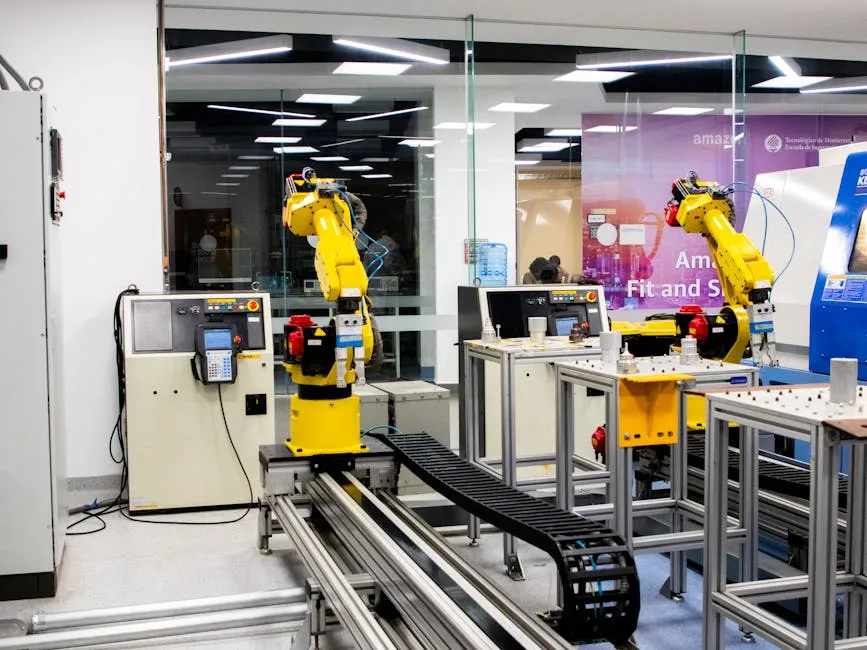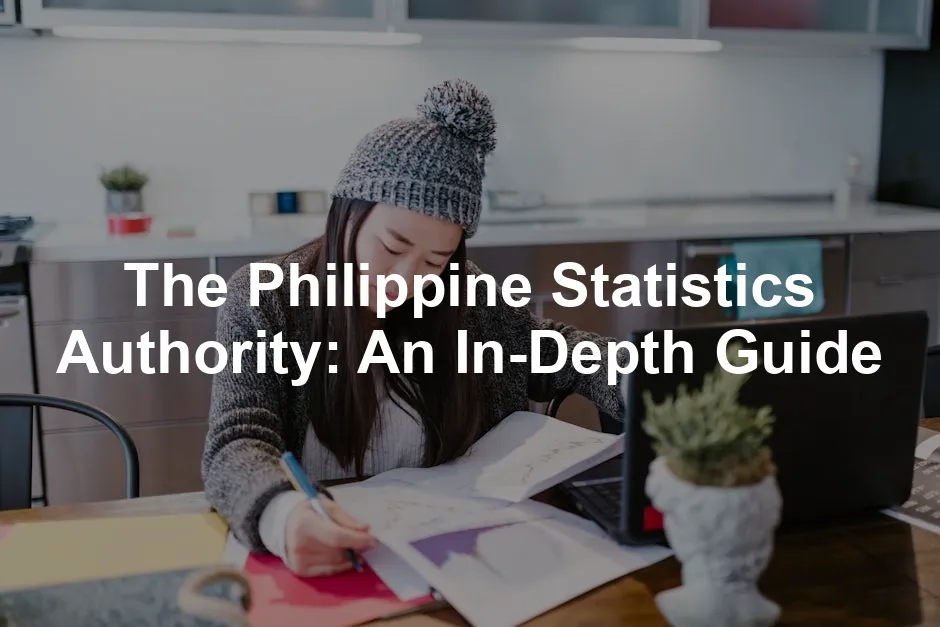Introduction
The Philippine Statistics Authority (PSA) is the nation’s go-to agency for statistical data. Established in 2014, it took over the roles of previous organizations, combining their efforts to provide comprehensive statistics and civil registration services. The PSA plays a pivotal part in gathering, analyzing, and disseminating vital data for the Philippines. This data fuels decision-making for various sectors, from government to business, making it essential for effective governance.
Accurate statistics are crucial for policy-making. They inform leaders about economic trends, social issues, and demographic shifts. In essence, data is the backbone of sound governance. The PSA’s work is especially important as the country strives to meet the Sustainable Development Goals (SDGs). These goals aim to end poverty, protect the planet, and ensure prosperity for all. Without reliable data, tracking progress toward these goals becomes nearly impossible.
In this article, we’ll explore the many functions of the PSA, including recent statistics, its role in civil registration, and how it contributes to achieving the SDGs. By providing a detailed overview, we aim to shed light on the significance of the PSA in shaping the future of the Philippines through data-driven insights.

1. Overview of the Philippine Statistics Authority
1.1 History and Establishment
The PSA was born from the need for a unified statistical body in the Philippines. Before its establishment, the National Statistics Office (NSO), National Statistical Coordination Board (NSCB), and the Bureau of Agricultural Statistics (BAS) were responsible for statistical duties. These organizations often operated in silos, leading to inconsistencies and gaps in data.
In 2014, the PSA emerged as the central statistical authority, consolidating these efforts. Its primary mandate is to produce reliable statistics, conduct censuses, and oversee civil registration. By streamlining these functions, the PSA aims to provide a cohesive and accurate statistical framework for the nation.
1.2 Mission and Vision
The PSA’s mission is clear: to deliver relevant and reliable statistics and civil registration services. The agency is committed to adhering to the UN Fundamental Principles of Official Statistics. This means the data it produces is not only accurate but also respects the rights and privacy of individuals.
The vision of the PSA is to be a world-class statistical authority that champions data quality and accessibility. It strives to ensure that stakeholders—from government officials to ordinary citizens—can access the information they need. This commitment to transparency and efficiency underpins the PSA’s operations, reinforcing its role as a cornerstone of Philippine governance.

1.3 Organizational Structure
The Philippine Statistics Authority (PSA) has a well-defined organizational structure. At the helm is the National Statistician, a key figure responsible for overseeing the agency’s operations. This individual is appointed by the President of the Philippines, ensuring that the role aligns with national priorities. The National Statistician also serves as the Civil Registrar General, guiding civil registration and statistics.
The PSA comprises several specialized departments and offices. Each unit plays a critical role in the agency’s functions. The main divisions include:
- Civil Registration and Central Support Office: This office manages civil registration processes, ensuring that vital events like births, marriages, and deaths are officially recorded. It also supports the implementation of the Civil Registry Law.
- Sectoral Statistics Office: This division focuses on economic, demographic, and social statistics. It conducts various surveys and censuses to collect relevant data for analysis and reporting.
- Censuses and Technical Coordination Office: This office is responsible for planning and executing national censuses. It also coordinates statistical activities across various sectors to ensure consistency in data collection.
- Philippine Identification System (PhilSys) Registry Office: Tasked with implementing the national ID system, this office manages the registration of citizens and the issuance of national IDs, facilitating improved access to services.
- Field Statistical Services: This division is crucial for data collection on the ground. Field offices across the country ensure that data gathering is comprehensive and representative of all regions.
- Planning and Management Service: This unit focuses on strategic planning and management of PSA resources, ensuring that the agency operates efficiently and effectively.
Together, these departments create a robust framework that supports the PSA’s mission. They enable the agency to fulfill its mandate of providing accurate and reliable statistics while enhancing civil registration services for all Filipinos. This organizational structure not only streamlines operations but also fosters collaboration among various teams, ensuring that the PSA can respond effectively to the country’s statistical needs.

2.3 National ID System (PhilSys)
The Philippine Identification System, commonly known as PhilSys, is a game-changer for Filipinos. This initiative, rooted in Republic Act No. 11055, aims to establish a unified national ID system for all citizens and resident aliens. Imagine having a single ID that simplifies your life—no more juggling multiple documents!
PhilSys is designed to enhance service delivery and provide citizens with easier access to government programs. With a robust identification system, getting services like health care, banking, and social security becomes more straightforward. No more waiting in long lines, fumbling with paperwork, or wondering if you have the right ID.
But wait, there’s more! The benefits of having a national ID system extend beyond mere convenience. PhilSys will streamline government processes, reduce fraud, and significantly cut down on the time required to access services. It’s like upgrading from a flip phone to a smartphone—everything is just a click away!
Furthermore, the initiative enhances security. With a national ID, identity verification becomes easier and more reliable. This means a decrease in identity theft and fraud. Your information is stored securely, allowing you to rest easy knowing that your identity is protected.

Speaking of protecting your personal information, consider investing in an RFID Wallet for Secure Identity Protection. With identity theft on the rise, this wallet ensures your personal information remains under wraps, keeping you safe from prying eyes.
In conclusion, the PhilSys initiative is more than just a piece of plastic; it represents a significant leap toward modernization and efficiency in the Philippines. By simplifying access to services and enhancing security, it’s poised to significantly improve the lives of millions of Filipinos. So, if you haven’t registered yet, what are you waiting for? Join the PhilSys revolution today!

3.3 Vital and Health Statistics
Vital statistics are the heartbeat of a nation’s demographic data. In the Philippines, the latest records from the Philippine Statistics Authority (PSA) reveal some fascinating figures. In 2023, there were 1,422,161 births, 406,331 marriages, and 682,531 deaths. These numbers tell a story about population dynamics and social trends in the country.
Birth rates have shown a notable trend. The total fertility rate has dipped from 2.7 in 2017 to just 1.9 in 2022. This decline indicates a shift toward smaller families, likely influenced by factors like urbanization, women’s education, and access to family planning services. As families rethink their sizes amidst economic pressures and lifestyle changes, this trend mirrors global patterns seen in developed nations.
On the marriage front, the numbers present a curious case. There were 406,331 marriages in 2023, which suggests a stable interest in tying the knot despite changing social norms. However, the increasing age at marriage indicates that many couples are prioritizing career and education before settling down.
Meanwhile, the death rate, with 682,531 recorded in 2023, brings attention to health concerns within the population. The aging demographic and rising lifestyle-related illnesses contribute to this figure, underscoring the need for improved healthcare initiatives.

If you’re keen on diving deeper into data analytics, check out Data Analytics: A Comprehensive Beginner’s Guide. This book can help you understand the trends behind the numbers, equipping you with the knowledge to analyze vital statistics effectively.
These vital statistics are crucial for planning and policy-making. They help the government and organizations understand population trends and allocate resources effectively. By analyzing this data, stakeholders can better address healthcare needs, support families, and promote social policies that cater to the evolving dynamics of Filipino society.
In summary, the vital and health statistics from the PSA not only provide numbers but also reflect the changing fabric of life in the Philippines. Understanding these trends is essential for shaping a resilient and responsive society.

To learn more about the importance of vital statistics, check out this comprehensive guide on dallas vital statistics.

5. Technology and Innovations at PSA
5.1 Digitalization Efforts
The Philippine Statistics Authority (PSA) is on a tech-driven journey, aiming to transform how data is collected and civil registration processes are managed. Imagine a world where your birth certificate arrives faster than your morning coffee! The PSA is using advanced technologies to streamline these processes, making them more efficient and user-friendly.
One significant advancement is the shift to online platforms for various services. Citizens can now apply for vital records, such as birth and marriage certificates, from the comfort of their homes. This eliminates long lines and saves valuable time. With a few clicks, you can submit applications and track their status in real-time. This digital leap also means that PSA can gather and analyze data much quicker, enhancing its overall capabilities.

If you’re looking to digitize your own documents, consider a Portable Scanner for Documents. This gadget allows you to quickly scan important papers, making your life easier and more organized.
Moreover, the implementation of automated systems in data collection ensures accuracy and efficiency. By utilizing mobile applications, field personnel can enter data directly into the system, reducing errors that often occur with manual entry. This innovation not only speeds up the process but also enhances the quality of the data collected.

5.2 OpenSTAT and Data Access
Welcome to OpenSTAT, the PSA’s treasure trove of statistical data! This platform is designed to provide public access to an array of statistics, making it easier for researchers, policymakers, and curious citizens to find the information they need. Think of it as a one-stop shop for all things data-related.
OpenSTAT boasts a user-friendly interface, allowing users to navigate through various datasets effortlessly. Want to know the latest birth rates or economic indicators? Just a few clicks, and voilà! Additionally, the platform offers visualization tools, making it simple to understand complex data at a glance. This approach not only promotes transparency but also encourages data literacy among the public.

If you’re interested in enhancing your data skills, grab a copy of Data Science for Dummies. It’s a fantastic resource for anyone looking to dive into the world of data.
The API feature of OpenSTAT is another exciting aspect. It allows developers to integrate PSA data into their applications, fostering innovation and collaboration. By opening up access to data, the PSA empowers users to create solutions that can address societal challenges.

5.3 Future Innovations
The future looks bright for the PSA as it plans to roll out even more technological advancements. Imagine an era where artificial intelligence (AI) assists in data analysis, providing deeper insights and predictive analytics. This could revolutionize how the PSA processes and interprets data, leading to more informed decision-making.
Moreover, the PSA is exploring partnerships with tech companies to enhance its digital infrastructure. With the rise of mobile technology, future initiatives may include mobile apps that allow citizens to access services and data on-the-go. The potential for innovations like blockchain in securing civil registration data is also on the horizon, ensuring that personal information remains safe and tamper-proof.
As these innovations unfold, the PSA’s commitment to enhancing public service will undoubtedly increase. The integration of cutting-edge technology will not only improve efficiency but also make data more accessible, further solidifying the PSA’s role as a vital resource for the nation.

6. Challenges and Future Directions
6.1 Challenges Faced by PSA
While the PSA has made impressive strides, challenges remain. One pressing issue is the difficulty in data collection, particularly in remote areas. Limited access to technology and infrastructure can hinder efficient data gathering. Additionally, ensuring that data is disaggregated by various demographics remains a challenge. This is crucial for understanding the unique needs of different communities.
Engaging citizens in the data collection process is another hurdle. Many people are unaware of the importance of statistics and how they affect governance and policy-making. Increasing awareness about the benefits of providing accurate data can enhance citizen participation and improve overall data quality.

6.2 Future Directions
Looking ahead, the PSA has ambitious plans to improve its data systems. One key initiative is enhancing public access to information. This means not just providing data but also making it understandable and actionable for the average citizen. Educational campaigns are being envisioned to raise awareness about the value of statistics in everyday life.
Moreover, the PSA aims to strengthen collaborations with local government units. By working closely with these entities, the agency can ensure that data collection is comprehensive and reflective of local realities. This partnership will help address the gaps in data availability and improve the quality of insights generated.
If you’re looking for a handy tool to help with your data organization, consider a Multi-Device Wireless Keyboard. This gadget allows you to switch between devices seamlessly, making your data entry much more efficient!
In summary, the PSA is committed to overcoming challenges while embracing technological innovations. By fostering a culture of data-driven decision-making, it will continue to play a crucial role in national development and governance.

Please let us know what you think about our content by leaving a comment down below!
Thank you for reading till here 🙂
All images from Pexels




